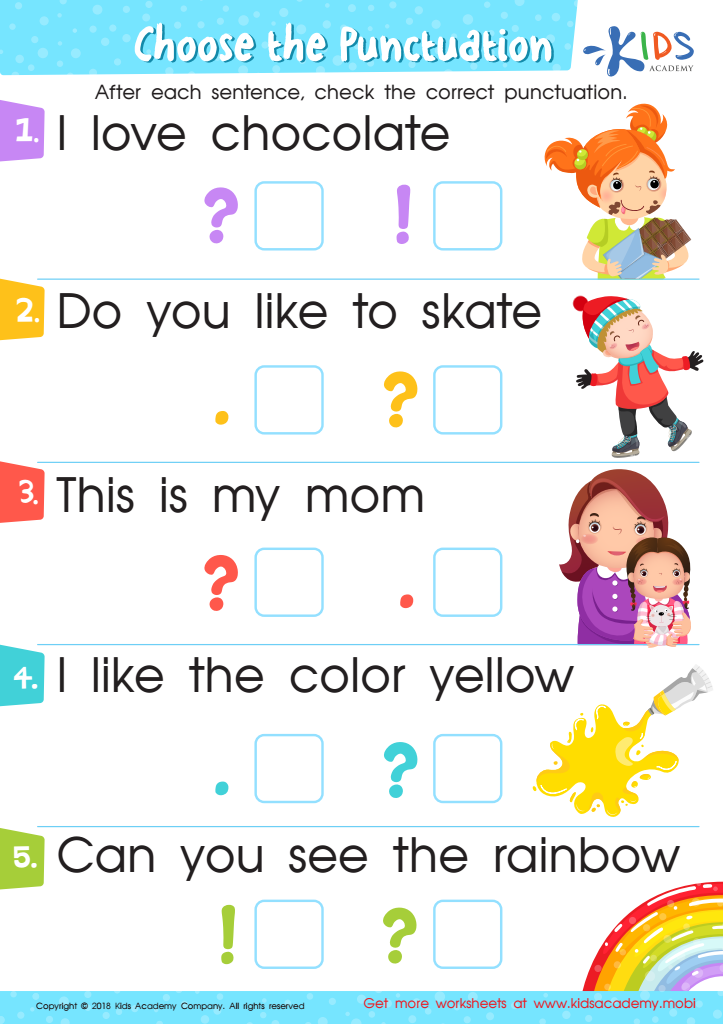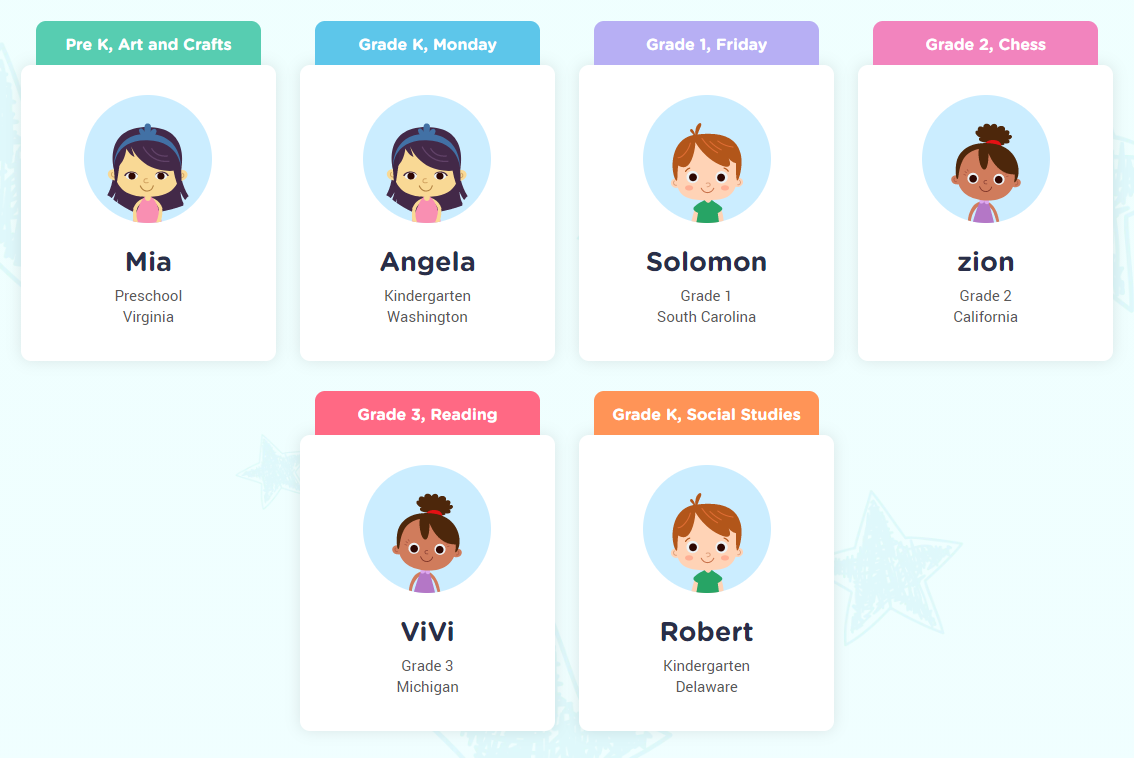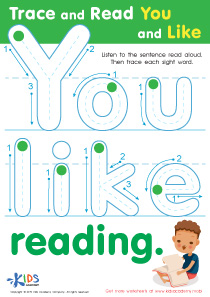Normal Punctuation worksheets activities for Grade 1
1 filtered results
-
From - To


Choose the Punctuation: Assessment Worksheet
Normal Punctuation worksheets activities for Grade 1 are an essential tool in the foundational stage of learning for young students. These activities are designed to introduce the basics of punctuation in a fun and engaging way, ensuring that children grasp the fundamental concepts from an early age. Punctuation marks are the traffic signals of language; they guide us on how to read and understand sentences. Therefore, mastering them is crucial for effective communication and comprehension.
One of the primary reasons why Normal Punctuation worksheets activities for Grade 1 are useful is that they lay the groundwork for strong writing and reading skills. By learning how to use periods, question marks, and exclamation marks correctly, students begin to understand sentence structure and the nuances of expressing different emotions or queries through writing. This early introduction can significantly enhance their literacy skills, fostering a love for reading and writing that can last a lifetime.
Moreover, these activities are designed with first graders in mind, making them accessible and not overwhelming. They often include colorful illustrations and engaging tasks that make learning punctuation feel like play. This approach helps in holding the attention of young learners, encouraging them to participate actively and enjoy their learning journey.
Furthermore, Normal Punctuation worksheets activities for Grade 1 also promote critical thinking and attention to detail. As students learn to identify where a sentence ends or what punctuation mark is missing, they are honing their analytical skills. This attention to detail is not only beneficial for language arts but also translates to other subjects and areas of life.
In conclusion, Normal Punctuation worksheets activities for Grade 1 are a cornerstone in building the language foundation for young learners. They not only introduce the basic rules of punctuation in an accessible manner but also support the development of reading, writing, critical thinking, and attention to detail. Incorporating these activities into the curriculum can have a lasting positive impact on students' academic journeys and beyond.
 Assign to My Students
Assign to My Students
















